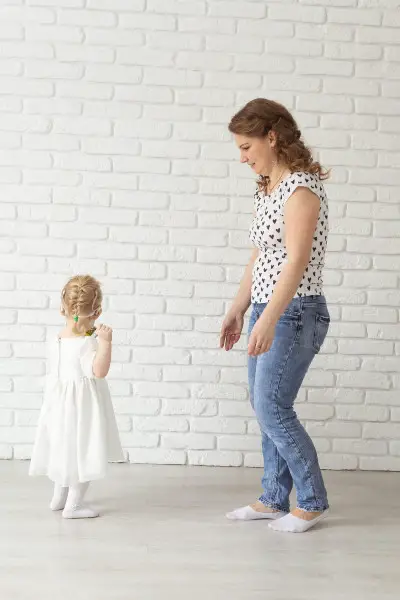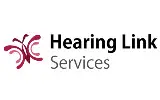Introduction
The gentle rustling of leaves, a bird’s joyful morning chirp, a mother’s soothing lullaby – sounds that paint the canvas of our childhood memories. Imagine, then, a world where these sounds gradually fade into silence. This is the reality for children dealing with conductive hearing loss, a condition that hinders the transmission of sound from the outer to the inner ear. It’s a quiet storm that they, and their families, must navigate. In this post, we will journey together into their world, and explore ways to turn this silent challenge into a symphony of resilience.
Understanding conductive hearing loss in children is not just about recognizing the medical nuances. It’s about empathizing with the challenges these little ones face daily – from struggling to keep up in school, dealing with the impact on their development, to yearning for typical childhood experiences. But equally, it’s about marveling at their courage, their strength, and their unyielding spirit. As we traverse through the journey of pediatric conductive hearing loss, our aim is not just to inform but also to inspire – to inspire empathy, understanding, and proactive action.
This comprehensive exploration starts by highlighting the signs of conductive hearing loss in children, which is often the first step towards a diagnosis. We then delve into the treatment strategies, shedding light on the advancements that are transforming lives. Recognizing the profound impact of this condition on a child’s development, we then discuss the challenges and coping mechanisms. Further, we offer a guide for parents, providing the much-needed support for navigating this journey. Finally, we turn our attention to the crucial role schools play in accommodating students with conductive hearing loss.
Ultimately, this post aims to be a beacon of hope and a guide for parents, educators, and anyone connected with a child with conductive hearing loss. It is a testament to our collective will to ensure that no child is left unheard in a world full of sounds.
Recognizing the Signs of Conductive Hearing Loss in Children
The first whisperings of conductive hearing loss often go unnoticed, attributed to a child’s whims or selective hearing. However, these early signs are crucial for diagnosing and treating this condition promptly. Children may frequently ask you to repeat yourself, increase the volume on their devices, or have trouble following instructions. It may seem like inattentiveness, but it could be their silent plea for help.
Catching these signs early is essential to mitigate the impact of conductive hearing loss. A child struggling to hear can feel like they’re in a bubble, cut off from the world. They may exhibit frustration, have difficulty in social situations, and experience delayed speech development. Regular hearing screenings and medical check-ups are a vital part of early diagnosis. However, parents and caregivers play an indispensable role in noticing these subtle signs. By staying observant and proactive, you could be the catalyst in breaking their silence.
https://www.hearing-loss.news/ringing-in-the-ears-uncovering-tinnitus/
Treatment Strategies for Pediatric Conductive Hearing Loss
Once a child is diagnosed with conductive hearing loss, the next step is exploring treatment options. These depend on the cause and severity of the condition. It could range from medication, surgery, to the use of hearing aids or cochlear implants. The goal is not just to restore hearing, but also to foster a child’s overall well-being and development.
Medications or surgical procedures often work well for conditions like ear infections or obstructions in the ear canal, common causes of conductive hearing loss. However, for more severe or persistent cases, hearing aids or cochlear implants may be necessary. These devices amplify sounds, helping the child pick up and process auditory information. They can be life-changing, acting as a key to unlock their world of sounds.
However, treatment goes beyond these medical interventions. It includes speech and language therapy, auditory training, and educational support. These holistic approaches aim to equip the child with the necessary skills to navigate their life with conductive hearing loss. After all, the journey towards hearing isn’t just about the destination – it’s about empowering the child to walk this path with confidence and resilience.
Exploring Hearing Aid Integration in iOS
Understanding the Impact of Conductive Hearing Loss on Child Development
A child’s world is a symphony of sounds. The sound of a ball bouncing, a teacher’s instruction, a friend’s laughter – each note contributes to their development. Conductive hearing loss, however, can disrupt this symphony, leading to challenges that extend beyond just hearing.
Children with conductive hearing loss may experience delays in language development. The lack of access to sound can hinder their ability to pick up and reproduce speech. This, in turn, can affect their reading skills, academic performance, and even social interactions. They may struggle to participate in group activities or follow along in class, leading to feelings of isolation or frustration.
Yet, it’s important to remember that these challenges do not define them. With the right support and resources, children with conductive hearing loss can thrive and reach their full potential. The journey might be a little different, but every milestone reached is a testament to their strength and resilience.
CBD for Tinnitus: Can It Stop the Ringing?
Parenting a Child with Conductive Hearing Loss: What You Need to Know
The day your child is diagnosed with conductive hearing loss, your world changes. You become not just a parent, but also an advocate, a cheerleader, a teacher. It’s a role filled with challenges, but one that comes with immense pride and joy.
The first step is to educate yourself about the condition. Knowledge is power, and understanding the nuances of conductive hearing loss can help you make informed decisions about your child’s treatment and care. Connect with doctors, audiologists, speech therapists, and even other parents who have walked the same path. There is comfort and strength in shared experiences.
Remember, your attitude and actions will significantly impact your child’s journey. Encourage them, celebrate their achievements, and acknowledge their struggles. Provide them with a nurturing and inclusive environment where their abilities, not their disability, are highlighted. And most importantly, listen to them – even if their voice comes from silence.
QUIZ - SYMPTOMS OF HEARING LOSS
How Schools Can Accommodate Students with Conductive Hearing Loss
Schools play a crucial role in the development of a child with conductive hearing loss. They are not just institutions for learning; they are also a training ground for essential life skills like communication, social interaction, and self-advocacy. Thus, it is essential that they provide an inclusive and supportive environment for students with hearing loss.
To ensure students with conductive hearing loss can participate fully in school activities, adjustments may be required. For instance, seating arrangements can be modified so that the child is closer to the teacher or source of sound. Use of visual aids and closed captioning in multimedia resources can also be helpful.
Furthermore, educators need to be equipped with knowledge and training to effectively teach and support these students. They should be aware of the impact of hearing loss on learning and know how to use assistive technologies like hearing aids and FM systems. They should also be prepared to adapt their teaching strategies to cater to the child’s unique needs.
Peer education can also foster an inclusive school environment. Encourage open discussions about hearing loss and what it means to live with it. This can help break down any stigma or misconceptions, while fostering understanding and empathy among classmates. Remember, every student deserves to be seen, heard, and valued.
Conclusion
Conductive hearing loss in children presents a unique set of challenges, yet it also opens doors to remarkable resilience, determination, and strength. From recognizing the signs to strategizing treatments, understanding the impact on child development, and providing supportive care, there are numerous facets to parenting a child with conductive hearing loss.
Schools, as fundamental environments for children’s growth, can play a significant role in their journey. By accommodating their needs, educating their peers, and providing a supportive and inclusive environment, schools can empower these students to thrive.
Conductive hearing loss, while life-altering, does not limit a child’s potential. Their path may be different, but with the right support, they can navigate it with confidence. They have the strength to create their own symphony, with each note ringing out clearly, resonating with resilience, and echoing with hope.

A Symphony of Innovation: The Inspiring Journey of Sensorineural Hearing Loss Advances
Introduction In the vast and diverse auditorium of life, every individual deserves
A Symphony of Innovation: The Inspiring Journey of Sensorineural Hearing Loss Advances
This piece explores the dynamic progress in sensorineural hearing loss research, from antioxidants and nanotechnology to regenerative medicine and future directions.
REFERENCES
Hearing Link
A UK-based hearing loss organization offering information and support to individuals and families, including resources on conductive hearing loss.






